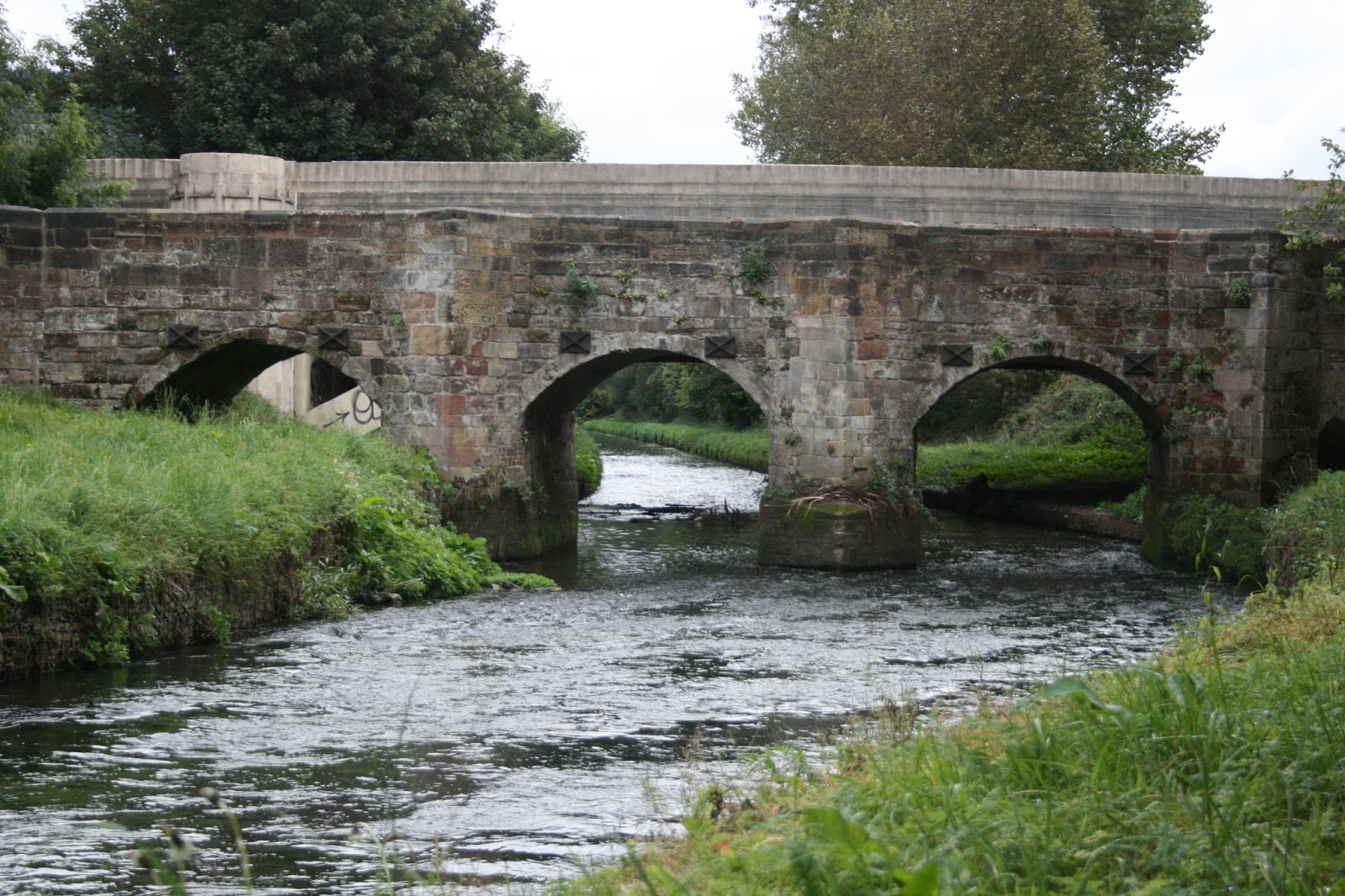 |
| The River Tame in Holford, in the heart of industrial Witton (2014). Holford Industrial Estate stands on both banks. |
Following out 'Ramble & Babble' last Wednesday, some questions about the history of places along the Tame came up......I will, in the next few posts, attempt to answer them.
#1. What is the 'Holford' part in Holford Industrial Estate ?
The Holford area of Witton, where the Holford Industrial Estate stands today, has a long history relating to an ancient crossing (the meaning of the word 'ford' is crossing point) of the river Tame. The 'hol-ford' was probably at Perry Bridges, where the Holbrook joins the Tame, as this was a prominent crossing point dating back to Roman times. The 'hol' part of the name probably relates to the word holm which is a water meadow,* so Holford was the crossing near the water meadows.
 |
| Perry Bridges, two bridges on the Aldridge Road, the closer dating from 1711. |
EARLY HISTORY
The water of the river Tame in Holford was used to power a mill from, at least, 1228, when a document of "William le Holdere of Honesworth", or, William the holder of Handsworth, notes a highway towards the mill of Holford. It is thought that this was a fulling mill used for hammering wool to remove wool and dirt, so there would have been sheep farming nearby. Like many mills along the River Tame, it was converted in the 1500s from a fulling mill to a hammer mill, hammering iron to remove the carbon and strengthen the metal; this had happened quite early at Holford, at least by 1533.** By the 1650s the site had been converted to a blade mill, grinding edge tools such as scythes, swords and axes.
METAL ROLLING
Between 1765 and 1781 Matthew Boulton of the Soho Works rented Holford Mill for metal rolling,*3* but it is likely that it was occupied with a dual purpose, with the water-power still being used for grinding tools as well. By 1815 it had been taken over by Thomas Wilmore of Birmingham, a 'manufacturer of rolled, plated, gilding and dipping metal, wires etc.'*4*
THE MANUFACTURE OF AMMUNITION
In the early 1870s the mill was acquired by Westley Richards, an old Birmingham gun making company, and Holford was used as they began in the production of ammunition. This was short lived, and throughout the Victorian period Holford Mill passed through a number of hands, but all the time producing ammunition for sport and for the wars of the period. By 1910 the site was neglected and run down, so was taken over by the neighbouring Kynoch ammunition factory, and became part of that vast site. The actual mill, a two-storied brick building, was being used as an office and store in the 1950s, though the waterwheel itself had been removed.
 |
| Advert for the National Arms & Ammunition Co. at Holford, 1873. |
 |
| A Grenfell & Accles Ltd. exhibition, 1891. |
 |
| Advert for Grenfell & Accles Ltd, 1890s. |
 |
| Part of Holford in 1947, with the Tame still separated into two branches. The closer one was the millrace used to power the original mill. |
NOTES
* Victoria County History- http://billdargue.jimdo.com/placenames-gazetteer-a-to-y/places-h/holford/
** The Tame Mills of Staffordshire, D. Dilworth
*3* Matthew Boulton: Enterprising Industrialist of the Enlightenment, edited by Mr Kenneth Quickenden, Ms Sally Baggott, Dr Malcolm Dick
*4* Wrightson's Triennial Directory (1815)

No comments:
Post a Comment